第35章 17(2)
Even some bloodless animals have an organ that serves for the perception of savours; and in sanguineous animals such an organ is invariably variably For even in such of these as would seem to an ordinary observer to have nothing of the kind, some of the fishes for example, there is a kind of shabby representative of a tongue, much like what exists in river crocodiles. In most of these cases the apparent absence of the part can be rationally explained on some ground or other. For in the first place the interior of the mouth in animals of this character is invariably spinous. Secondly, in water animals there is but short space of time for the perception of savours, and as the use of this sense is thus of short duration, shortened also is the separate part which subserves it. The reason for their food being so rapidly transmitted to the stomach is that they cannot possibly spend any time in sucking out the juices; for were they to attempt to do so, the water would make its way in during the process. Unless therefore one pulls their mouth very widely open, the projection of this part is quite invisible. The region exposed by thus opening the mouth is spinous; for it is formed by the close apposition of the gills, which are of a spinous character.
In crocodiles the immobility of the lower jaw also contributes in some measure to stunt the development of the tongue. For the crocodile's tongue is adherent to the lower jaw. For its upper and lower jaws are, as it were, inverted, it being the upper jaw which in other animals is the immovable one. The tongue, however, on this animal is not attached to the upper jaw, because that would interfere with the ingestion of food, but adheres to the lower jaw, because this is, as it were, the upper one which has changed its place. Moreover, it is the crocodile's lot, though a land animal, to live the life of a fish, and this again necessarily involves an indistinct formation of the part in question.
The roof of the mouth resembles flesh, even in many of the fishes; and in some of the river species, as for instance in the fishes known as Cyprini, is so very flesh-like and soft as to be taken by careless observers for a tongue. The tongue of fishes, however, though it exists as a separate part, is never formed with such distinctness as this, as has been already explained. Again, as the gustatory sensibility is intended to serve animals in the selection of food, it is not diffused equally over the whole surface of the tongue-like organ, but is placed chiefly in the tip; and for this reason it is the tip which is the only part of the tongue separated in fishes from the rest of the mouth. As all animals are sensible to the pleasure derivable from food, they all feel a desire for it. For the object of desire is the pleasant. The part, however, by which food produces the sensation is not precisely alike in all of them, but while in some it is free from attachments, in others, where it is not required for vocal pur, poses, it is adherent. In some again it is hard, in others soft or flesh-like. Thus even the Crustacea, the Carabi for instance and the like, and the Cephalopods, such as the Sepias and the Poulps, have some such part inside the mouth. As for the Insects, some of them have the part which serves as tongue inside the mouth, as is the case with ants, and as is also the case with many Testacea, while in others it is placed externally. In this latter case it resembles a sting, and is hollow and spongy, so as to serve at one and the same time for the tasting and for the sucking up of nutriment.
This is plainly to be seen in flies and bees and all such animals, and likewise in some of the Testacea. In the Purpurae, for instance, so strong is this part that it enables them to bore holes through the hard covering of shell-fish, of the spiral snails, for example, that are used as bait to catch them. So also the gad-flies and cattle-flies can pierce through the skin of man, and some of them even through the skins of other animals. Such, then, in these animals is the nature of the tongue, which is thus as it were the counterpart of the elephant's nostril. For as in the elephant the nostril is used as a weapon, so in these animals the tongue serves as a sting.
In all other animals the tongue agrees with description already given.